Digital Lock-in amplifier pulls signal out of noise floor
| *NEW* |
| Completely new design of lock-in firmware available. |
| Supports multiple references, both external and internal complex references. |
| Sample Rate SR up to 2 MSPS using new modular product range |
| Up to 32 channels per unit and configurable 4 or more references typical. |
| New design uses a high-order FIR to decouple REF frequency from SR. |
| Complex reference is insensitive to phase error. |
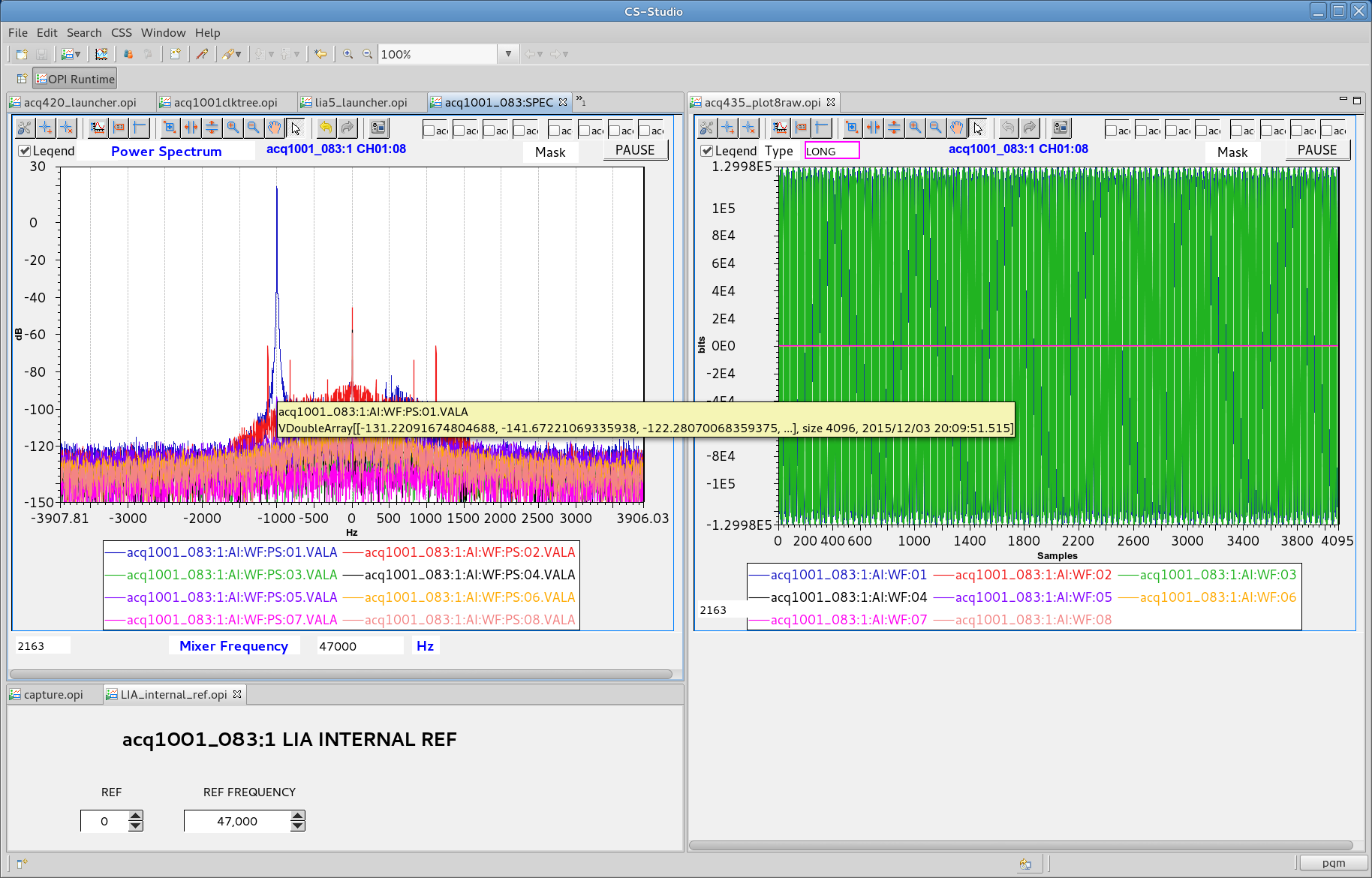 |
 |
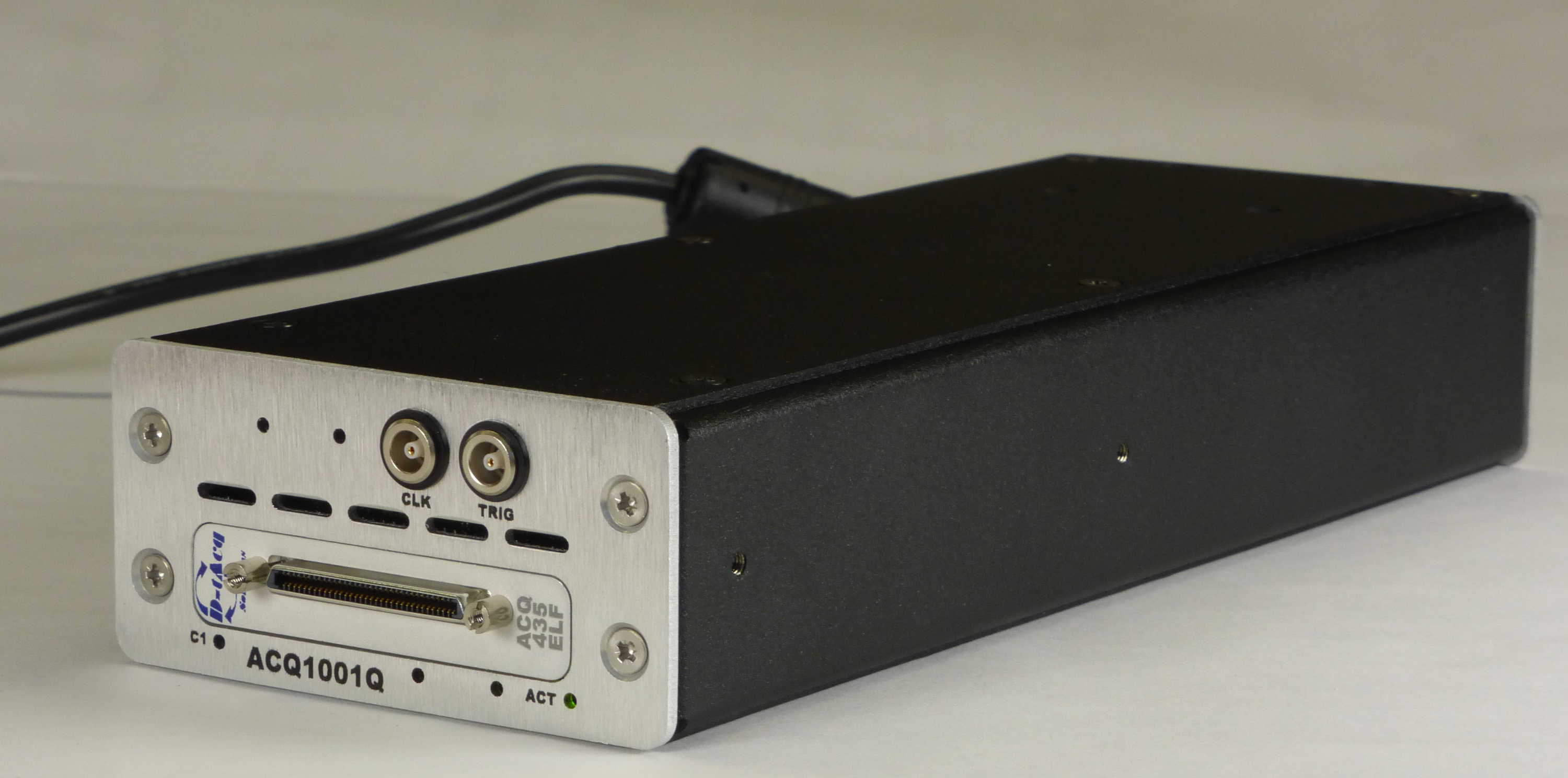 |
| Please contact D‑TACQ for details. email: info@d-tacq.co.uk |
Special DSP firmware allows ACQ196CPCI to function as a 96-channel digital lock-in amplifier.
This is a digital integrator that will yield huge processing gain when an incoming signal is correlated with a reference signal.
lock-in amplifier definition [Wikipedia]
The D‑TACQ implementation is somewhat unique in that there are many simultaneous channels. The standard implementation uses a single reference
(either a single analog input channel, or internal reference). The logic is capable of generating a stimulus waveform to the plant, and the reference may be either the digital representation of this exact waveform, or any other digital waveform defined in a lookup-table.
There are several implementations of the logic:
96 Channels, single reference
32 Channels, 4 references
96 Channels, multiple references {1, 3 or 5}.
In addition, the FPGA logic can include a downstream FIR LP filter.
Typical applications include
- Array magnetometer using in medical imaging
- Digitizing output of Photo Elastic Multiplier in Motional Starck Effect diagnostic
- Digital integrator for long term magnetics monitoring with low drift.
Example
Test using a small signal. The lock-in is able to extract a DC value corresponding to the signal;
In the presence of intense noise, the small signal is invisble in the noise floor, however the lock-in is still able to resolve it as before.
The signal would benefit from some additional LP filtering, this can easily be done in software, since the output data rate is low.
|
FFT without lock-in |
Lock-in output |
| Without Noise |
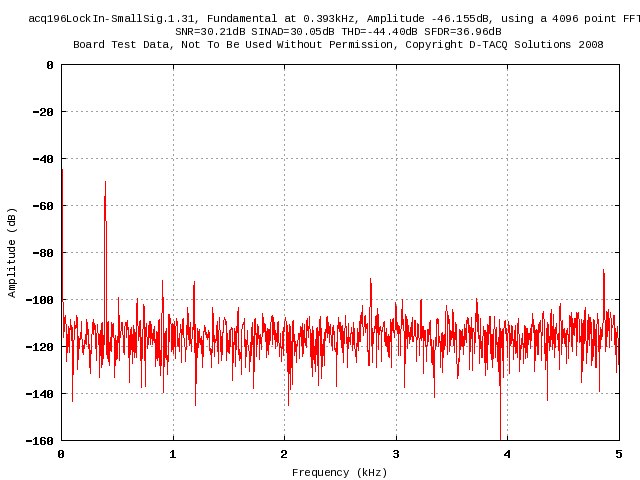 |
 |
| With Noise |
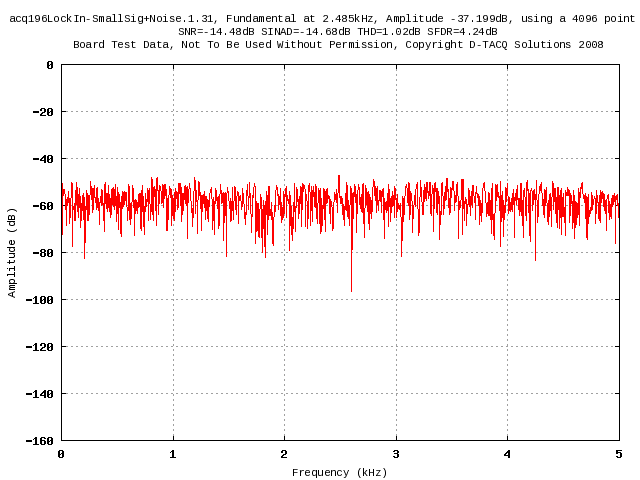 |
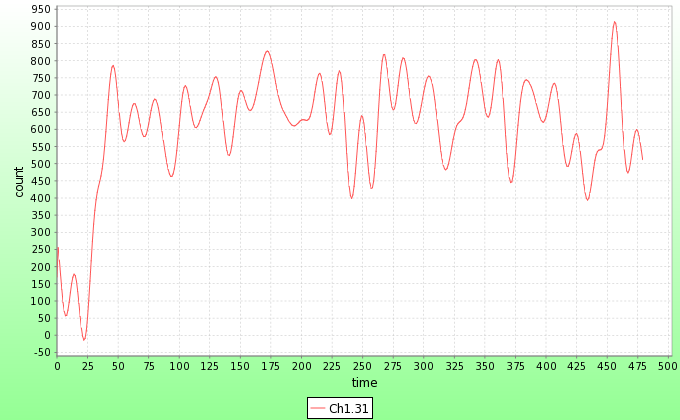 |